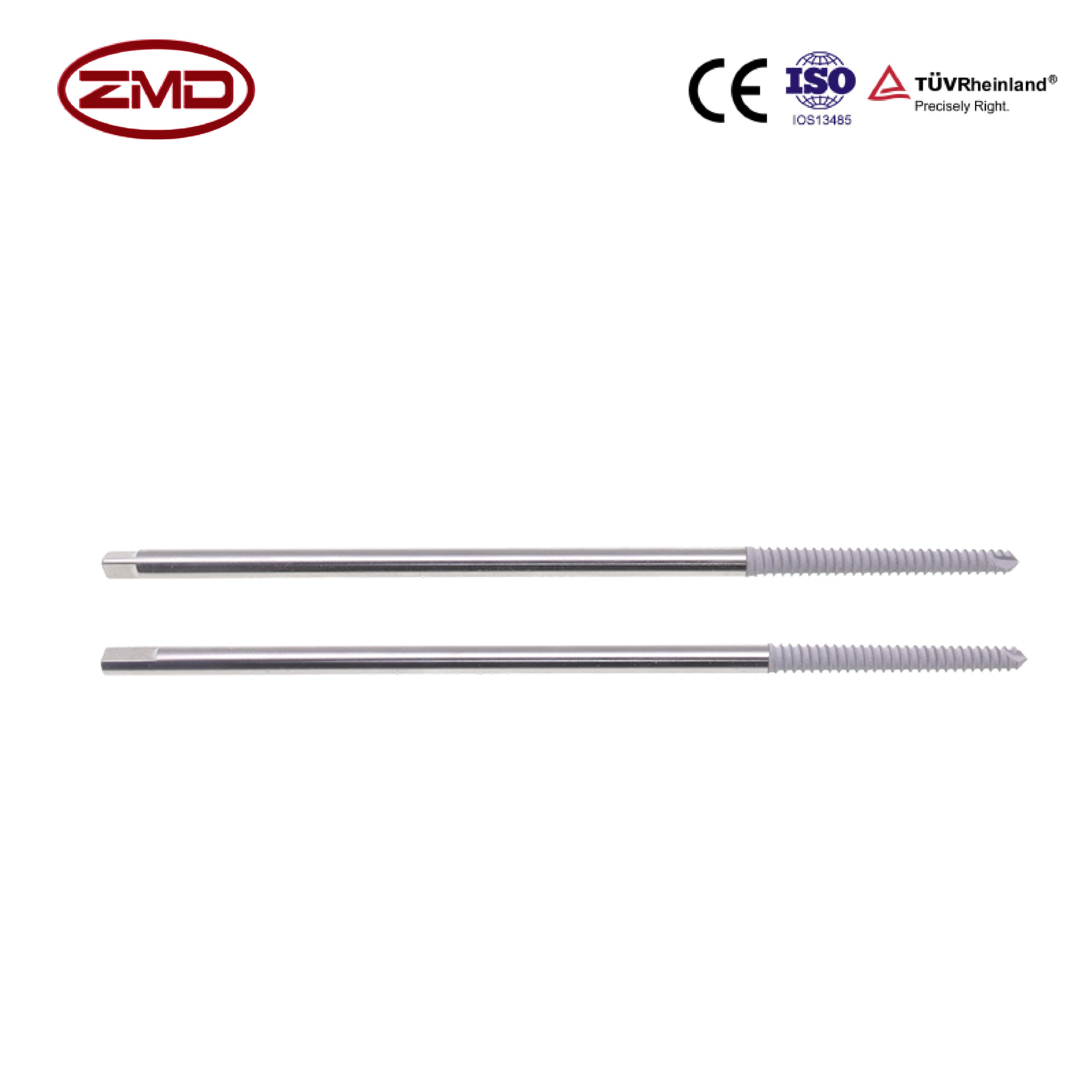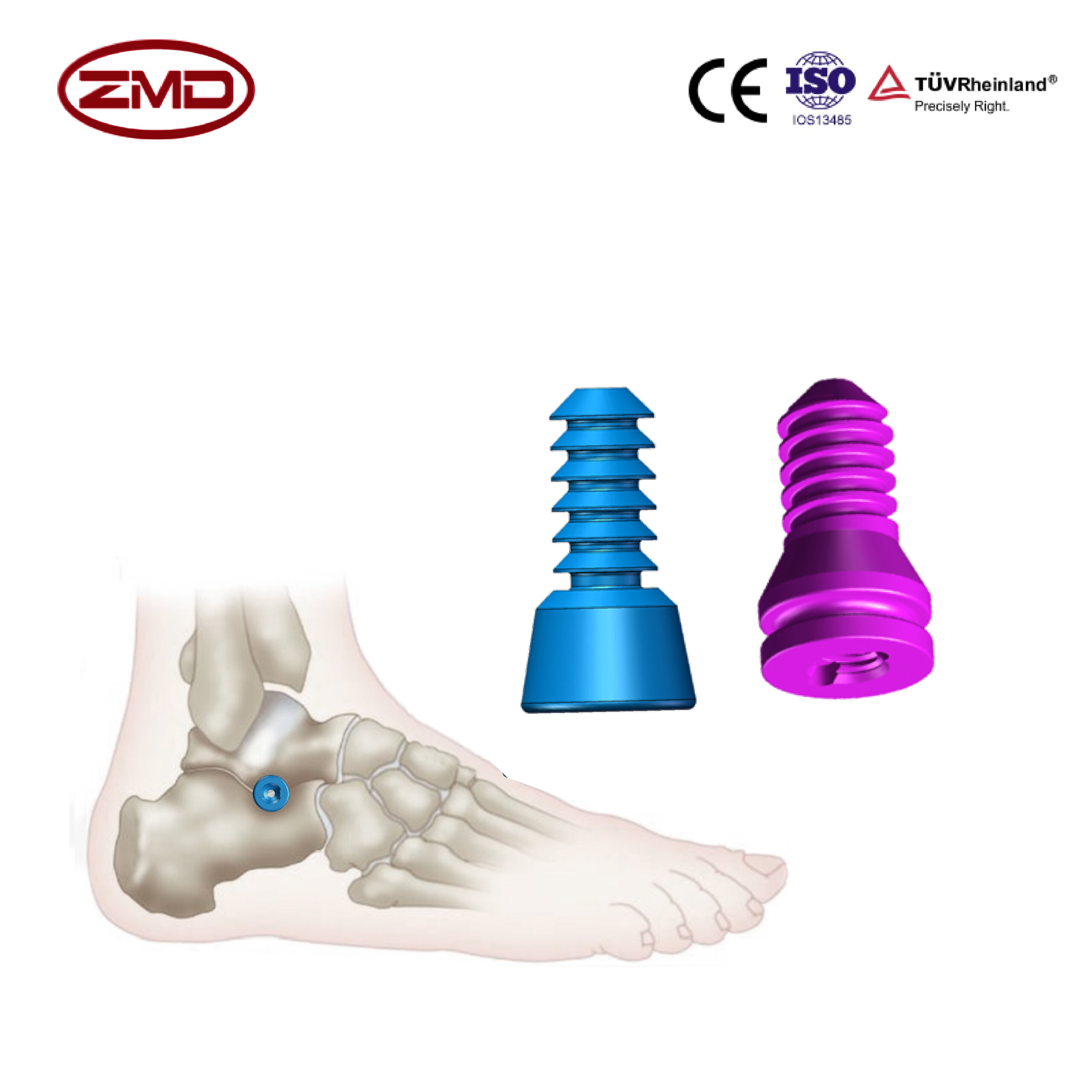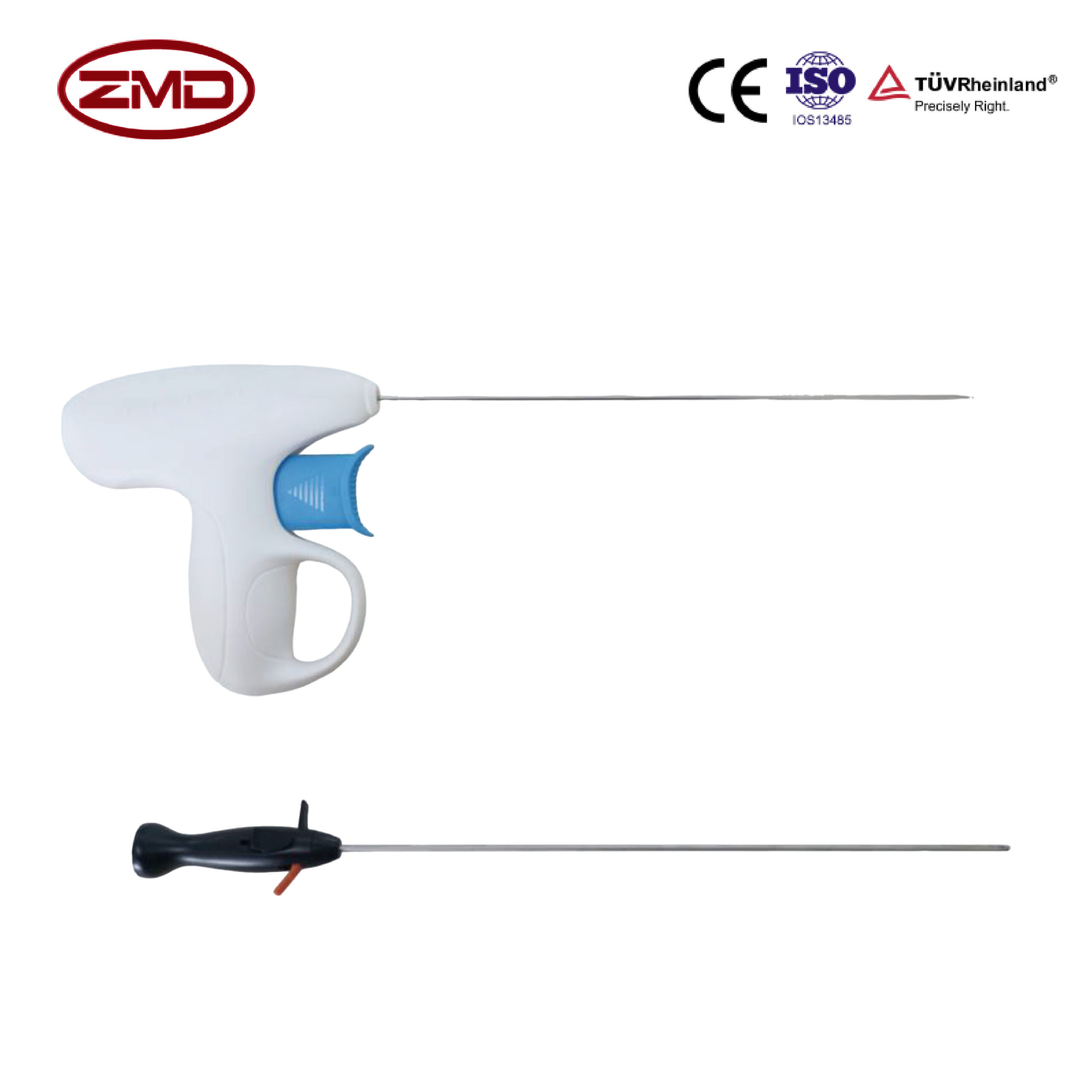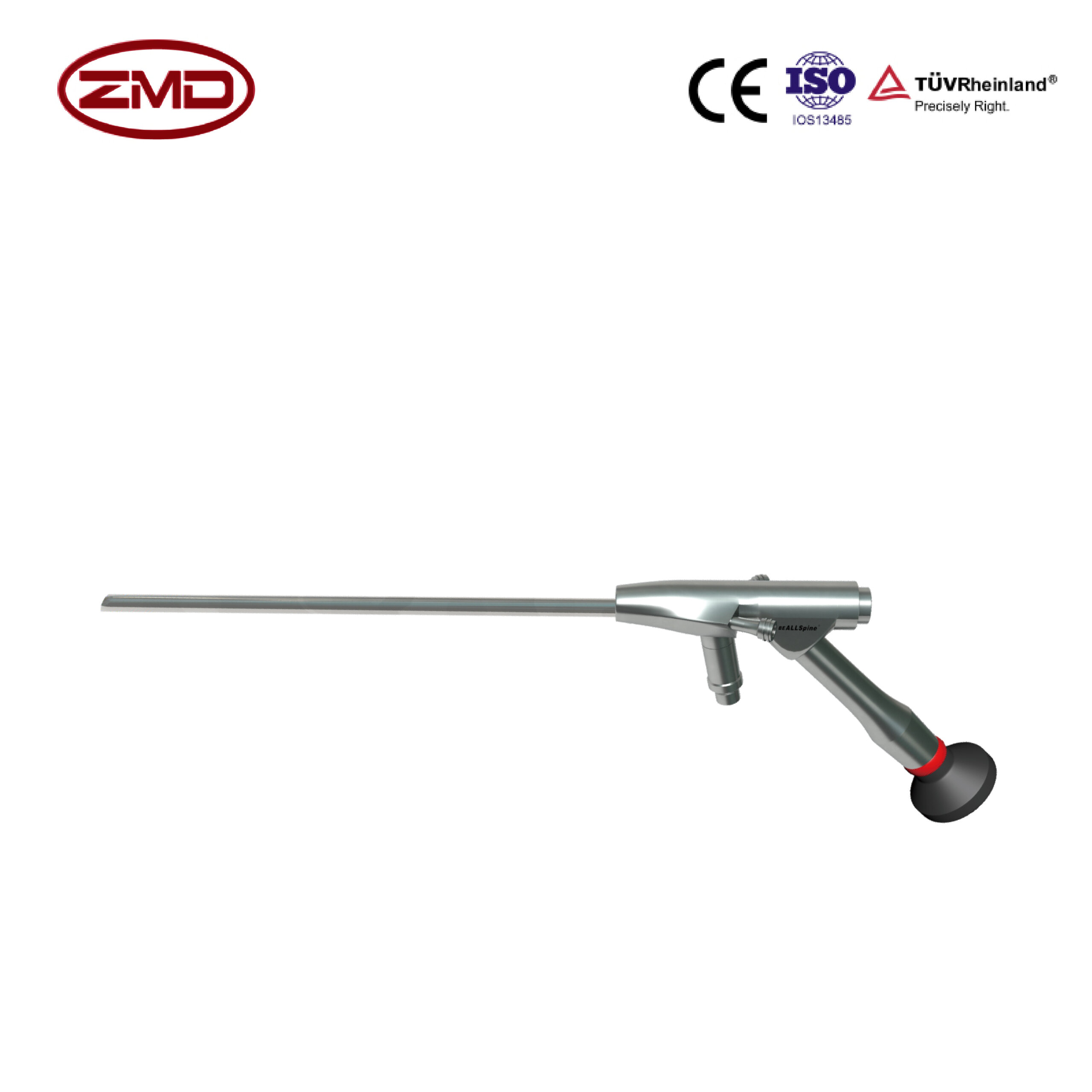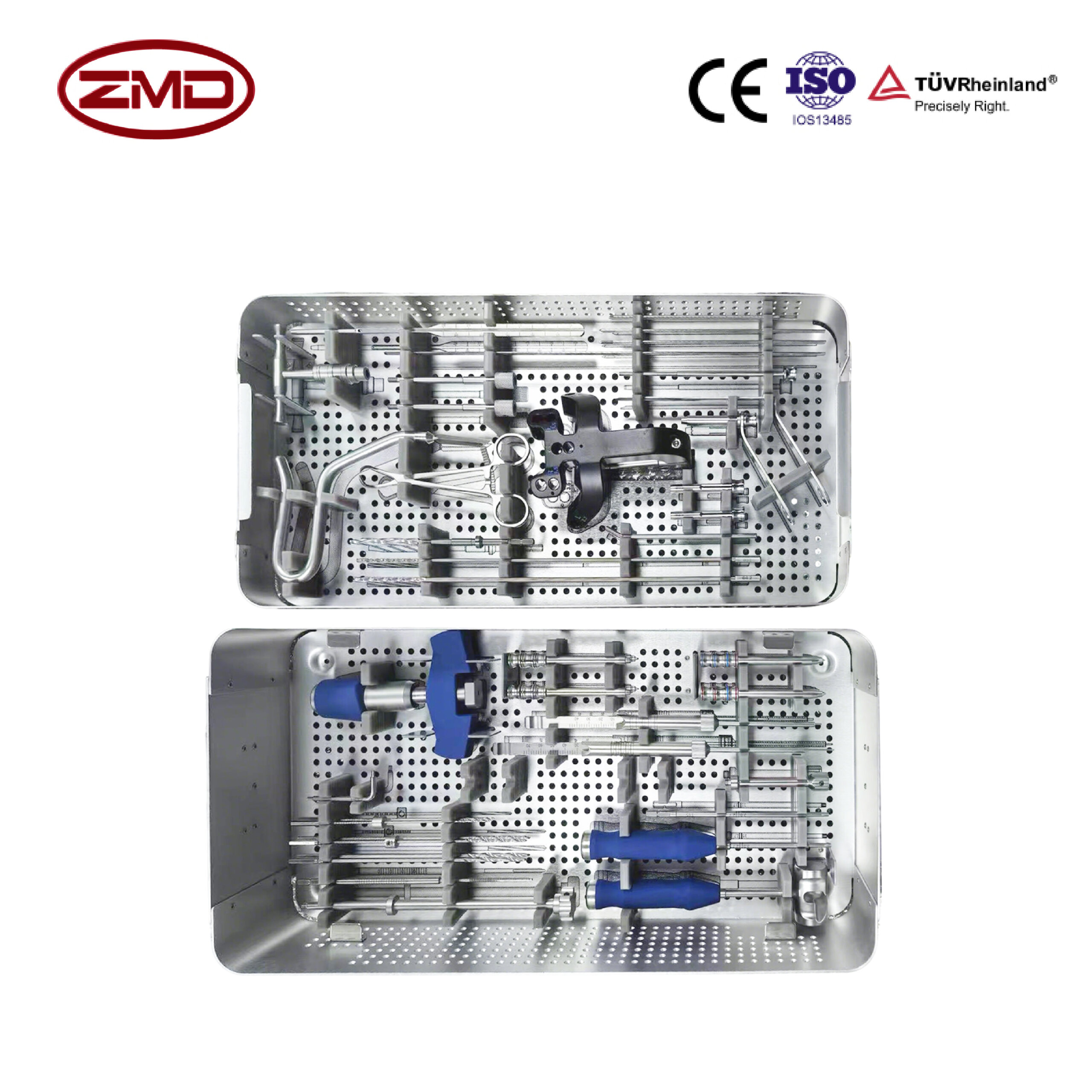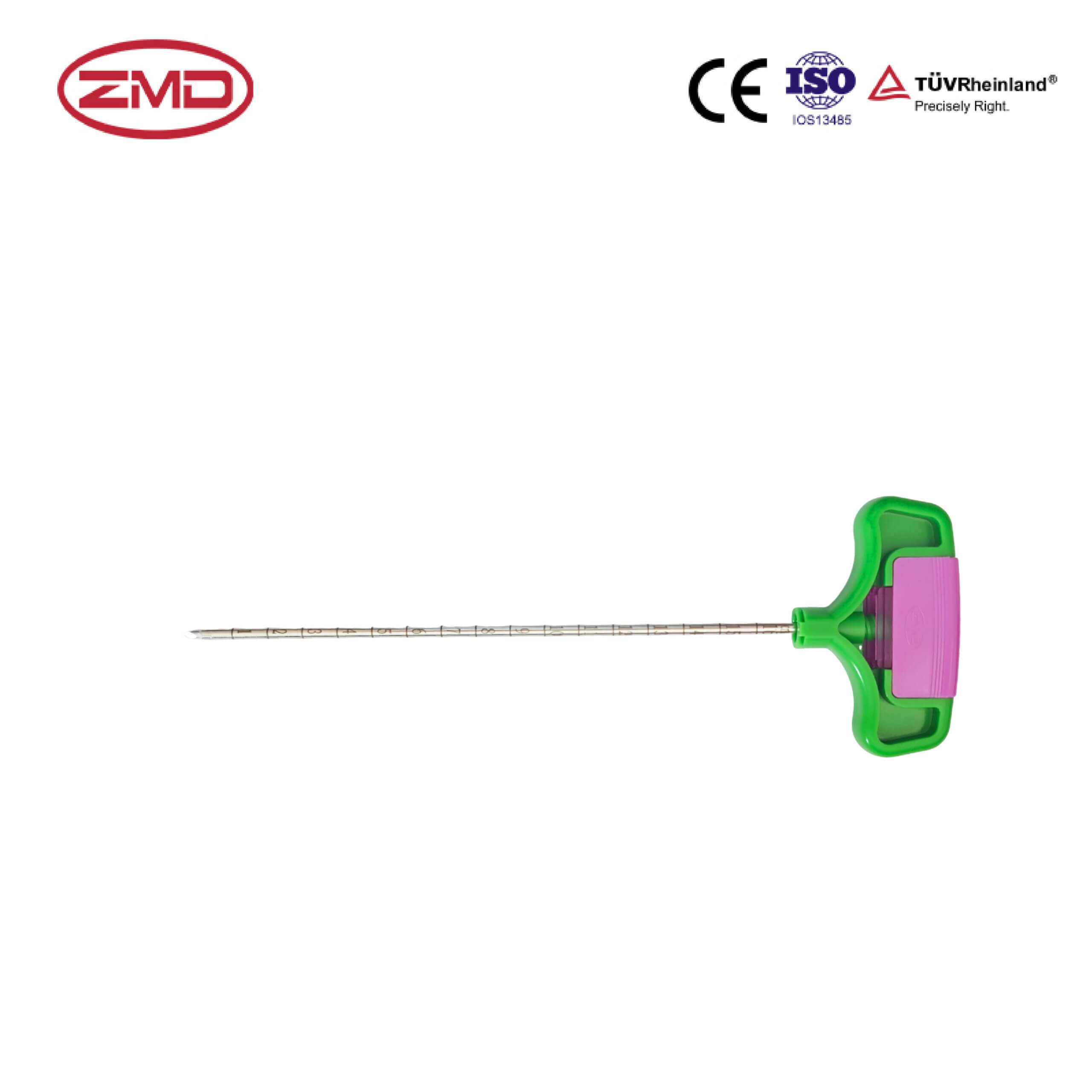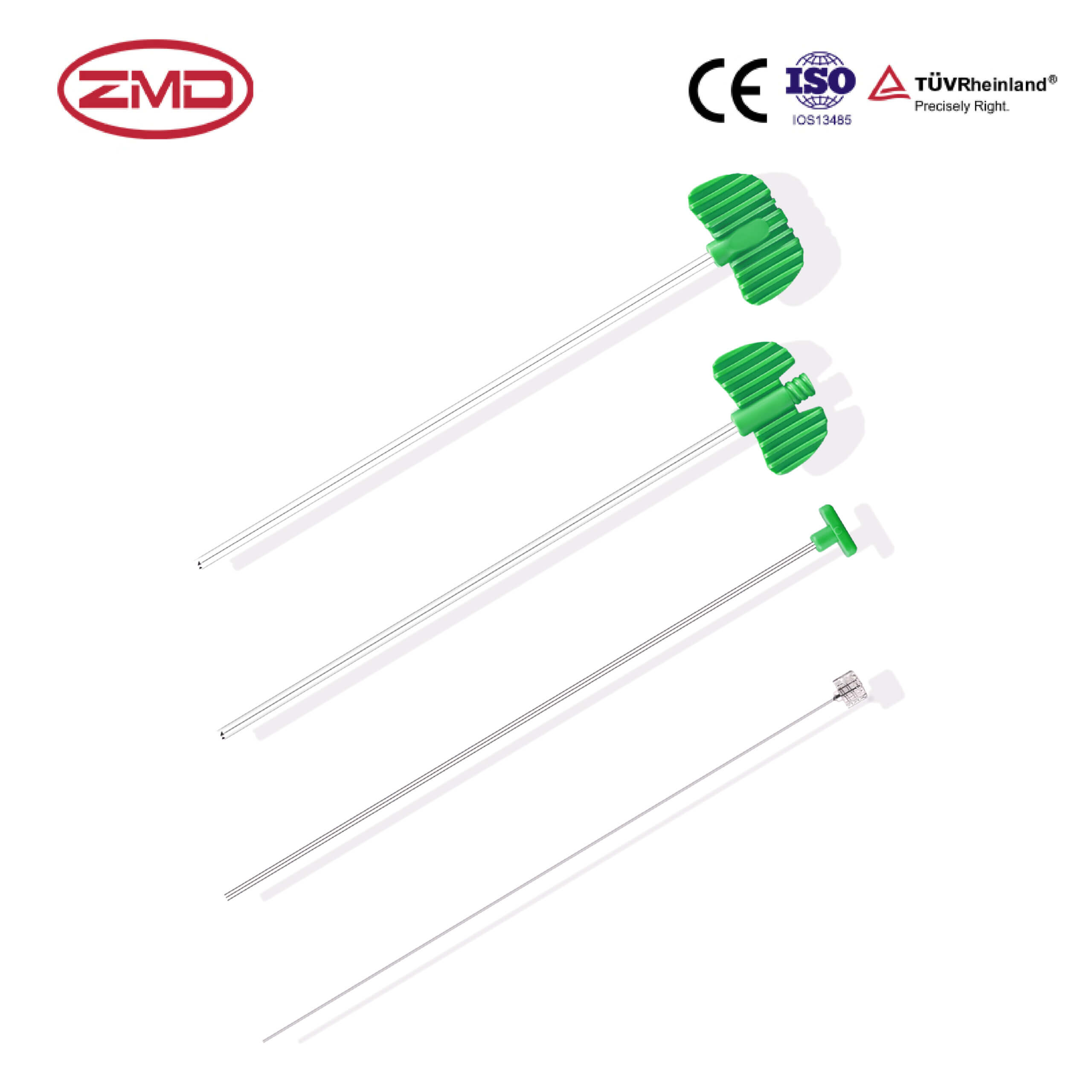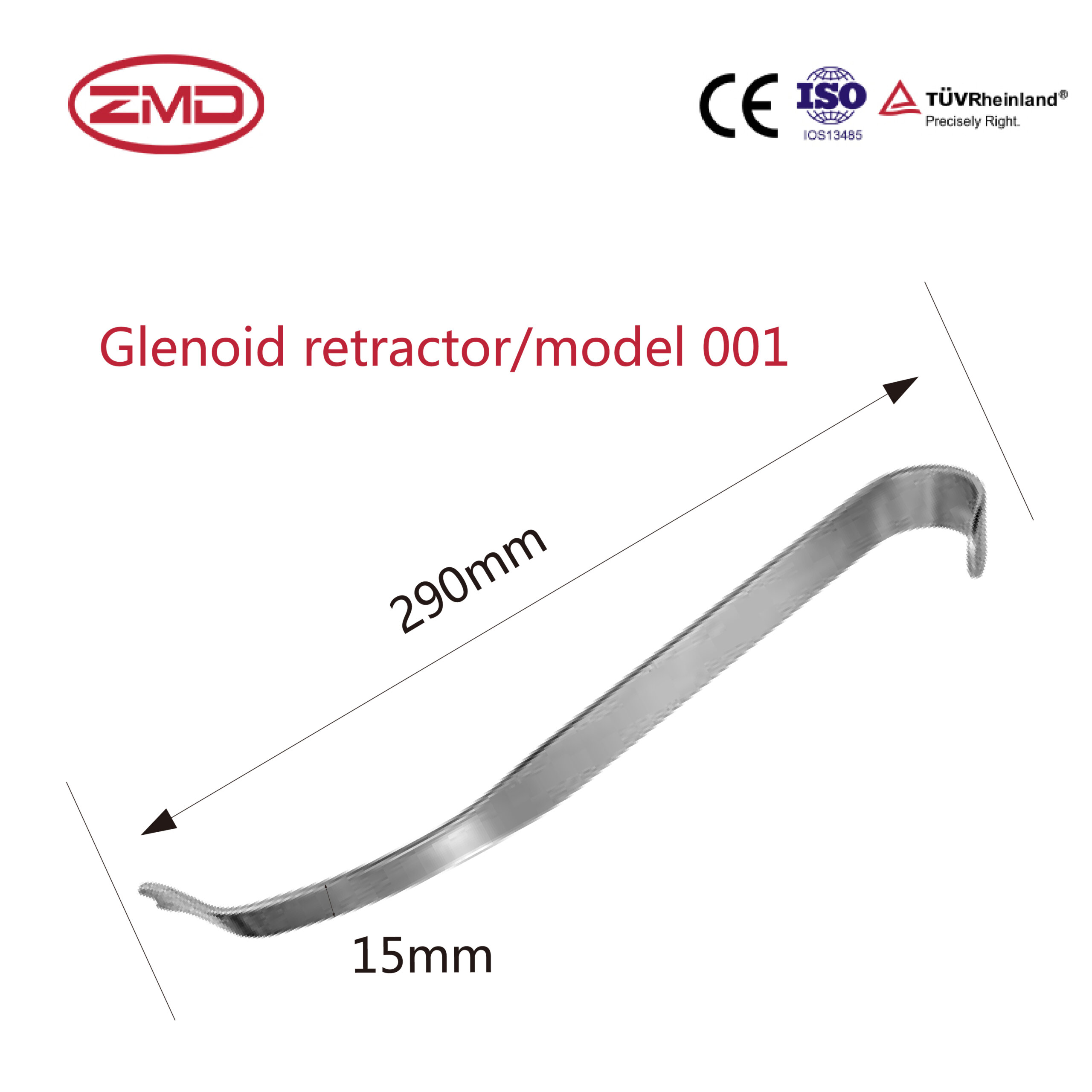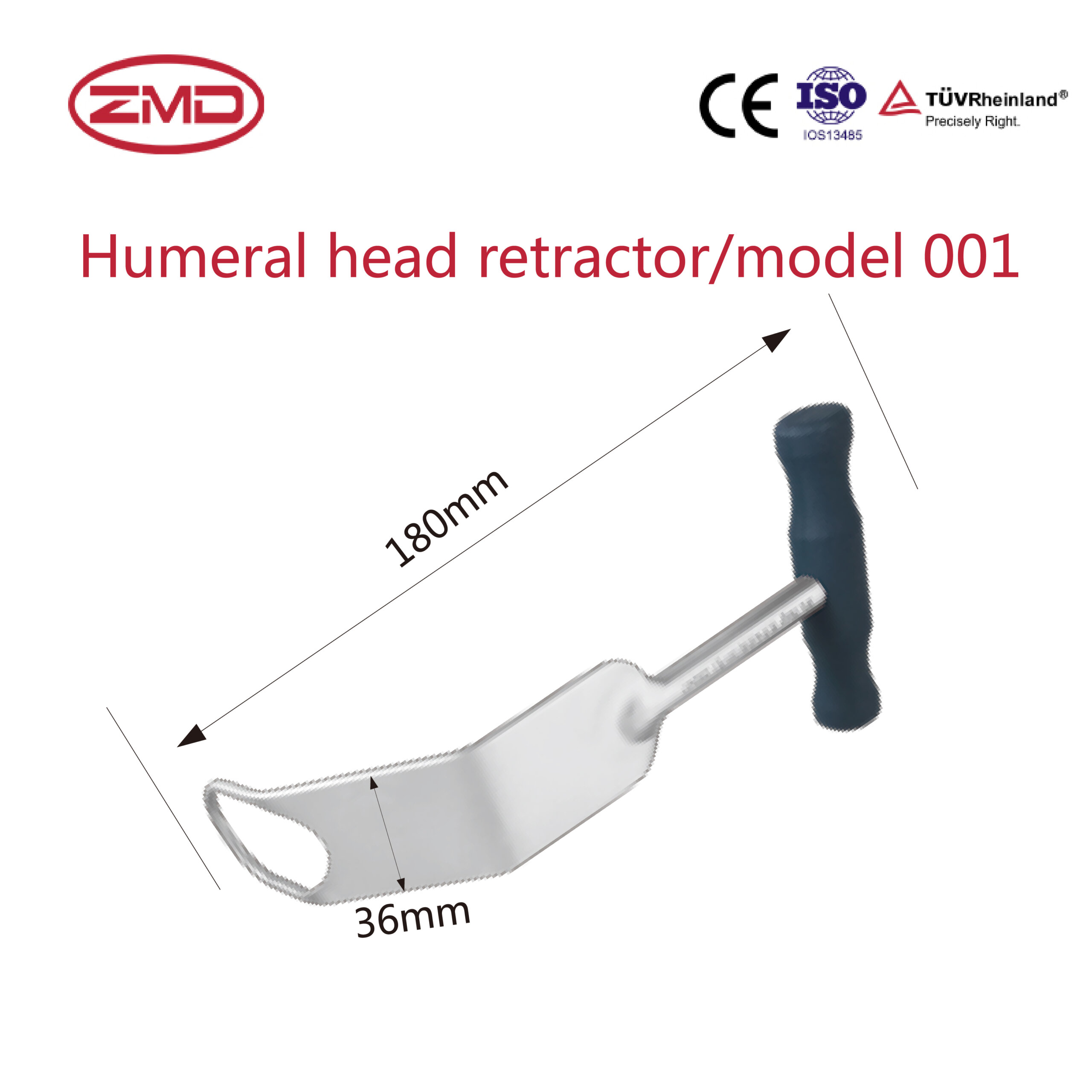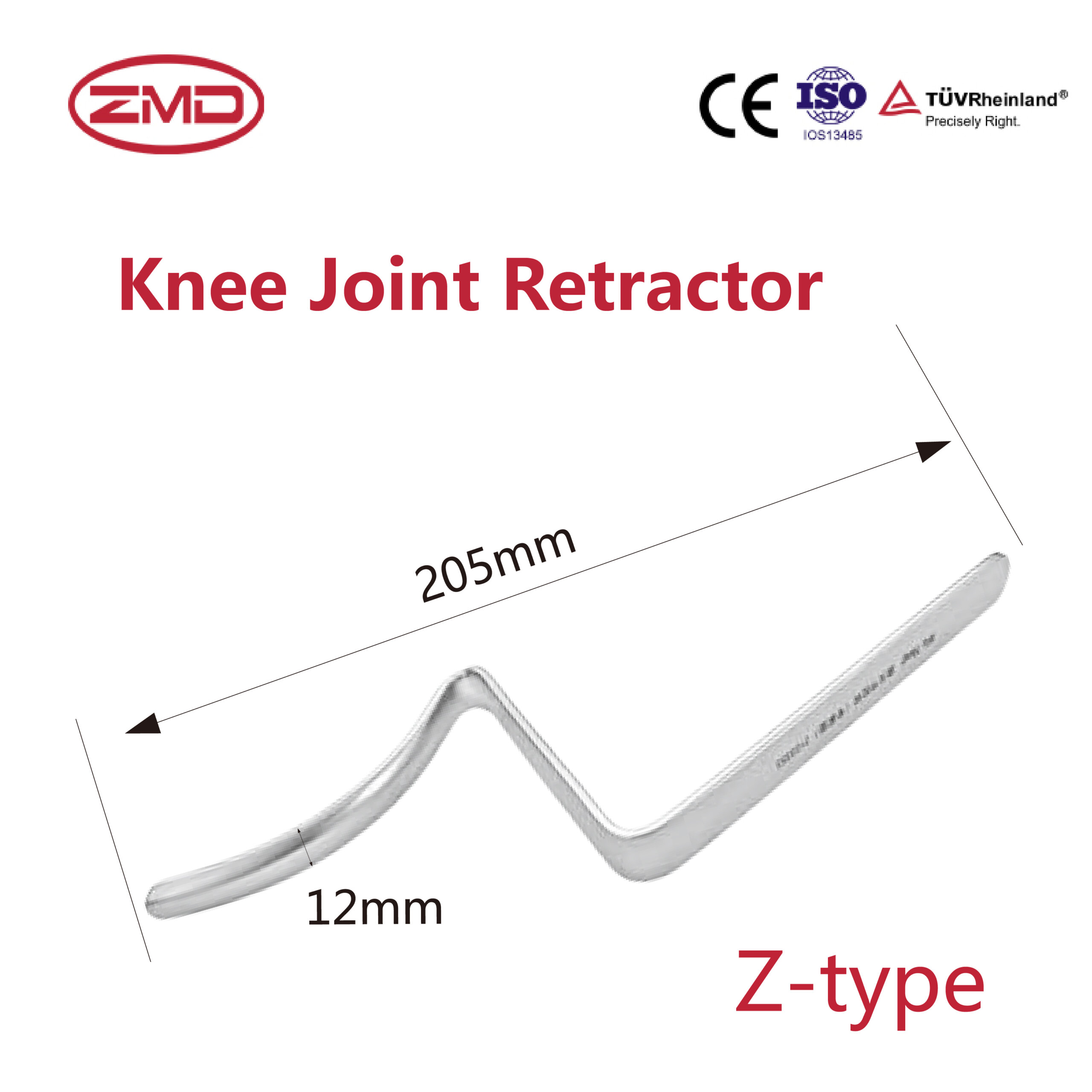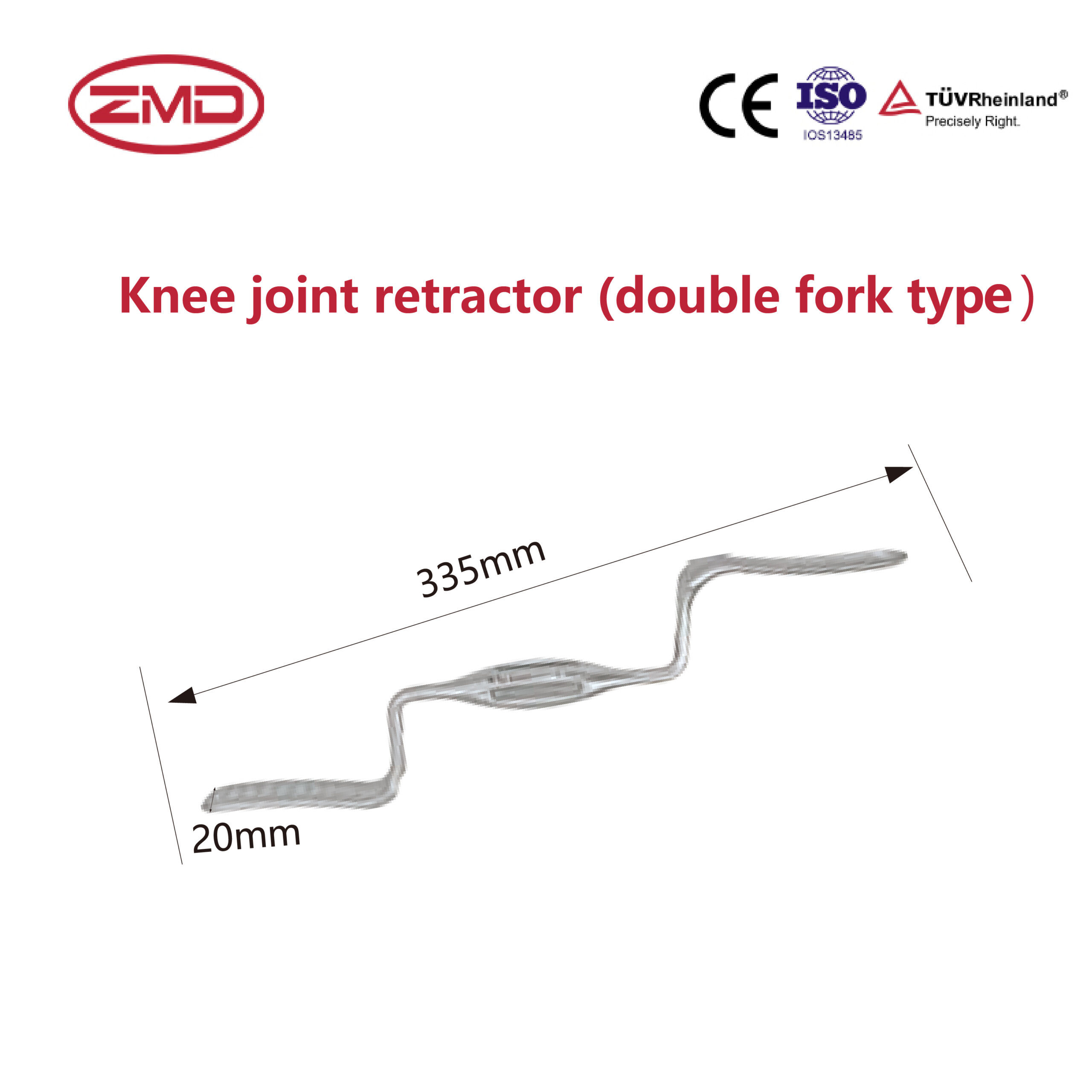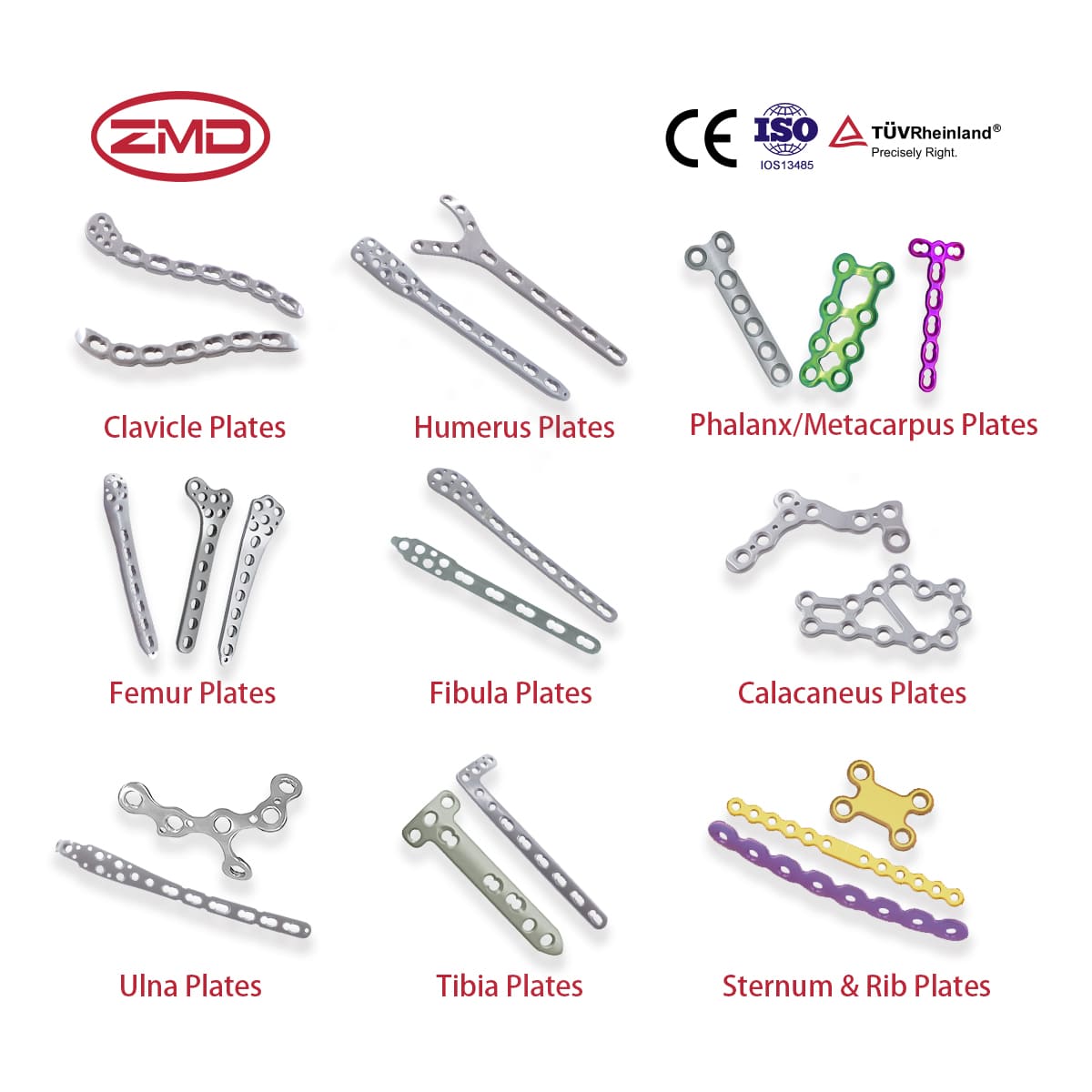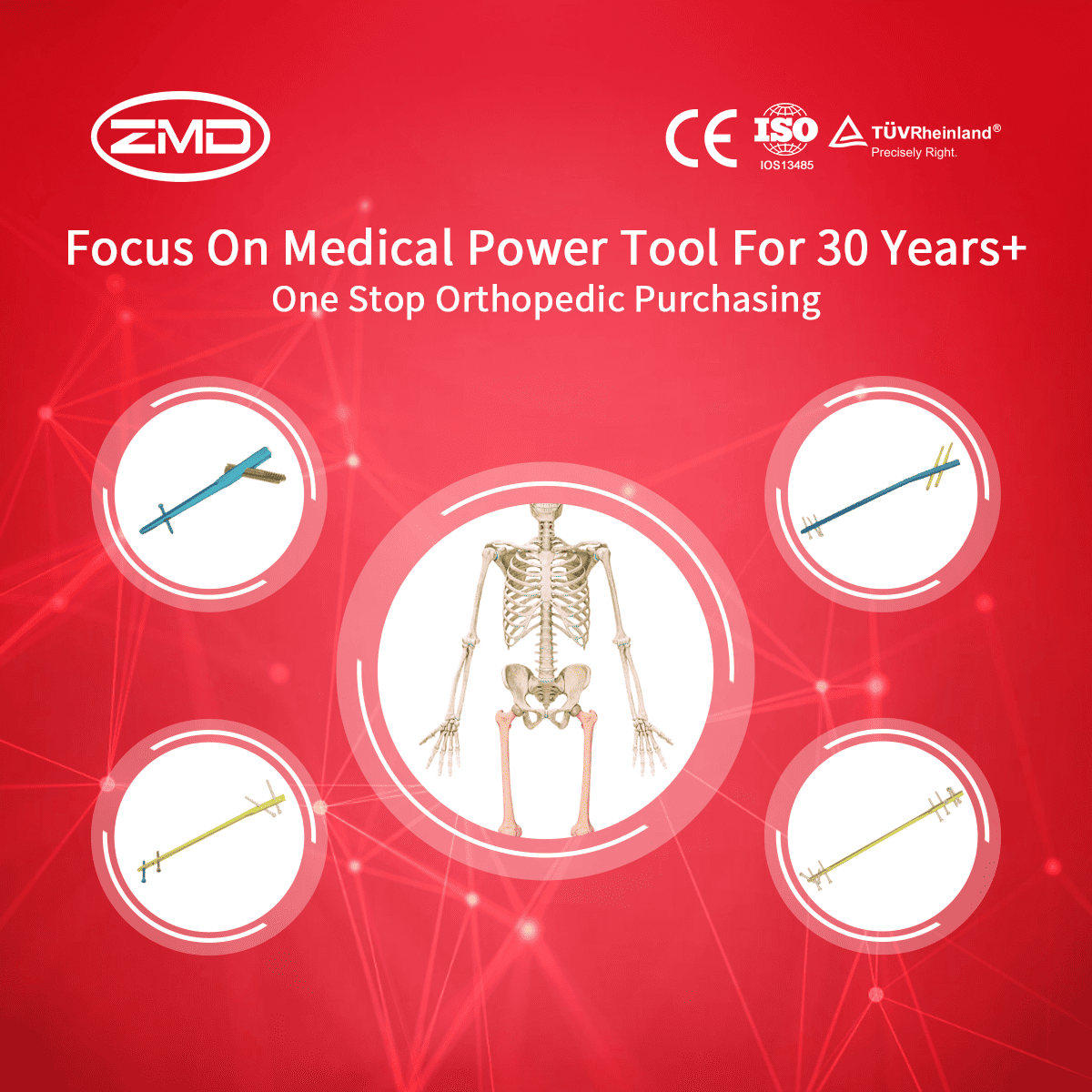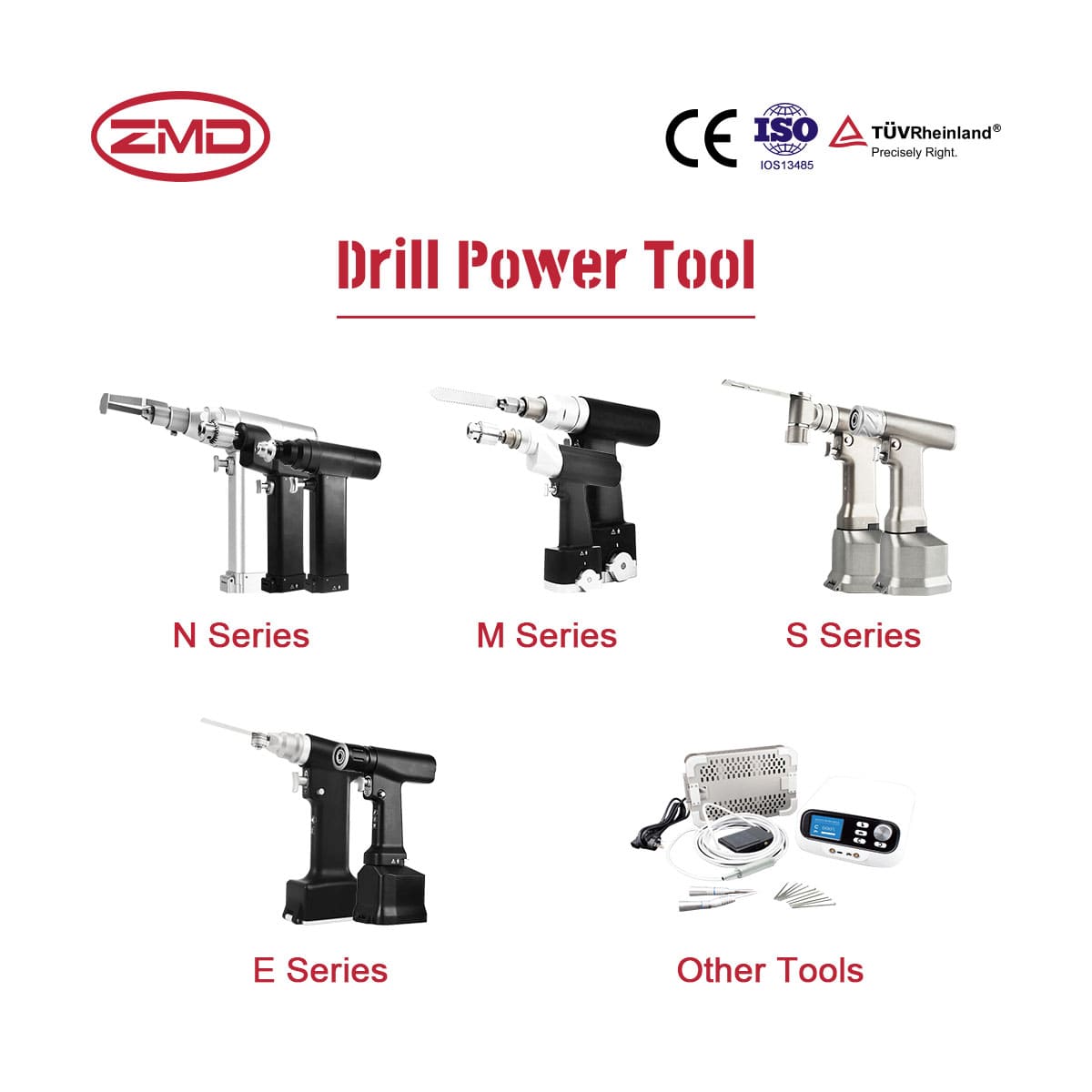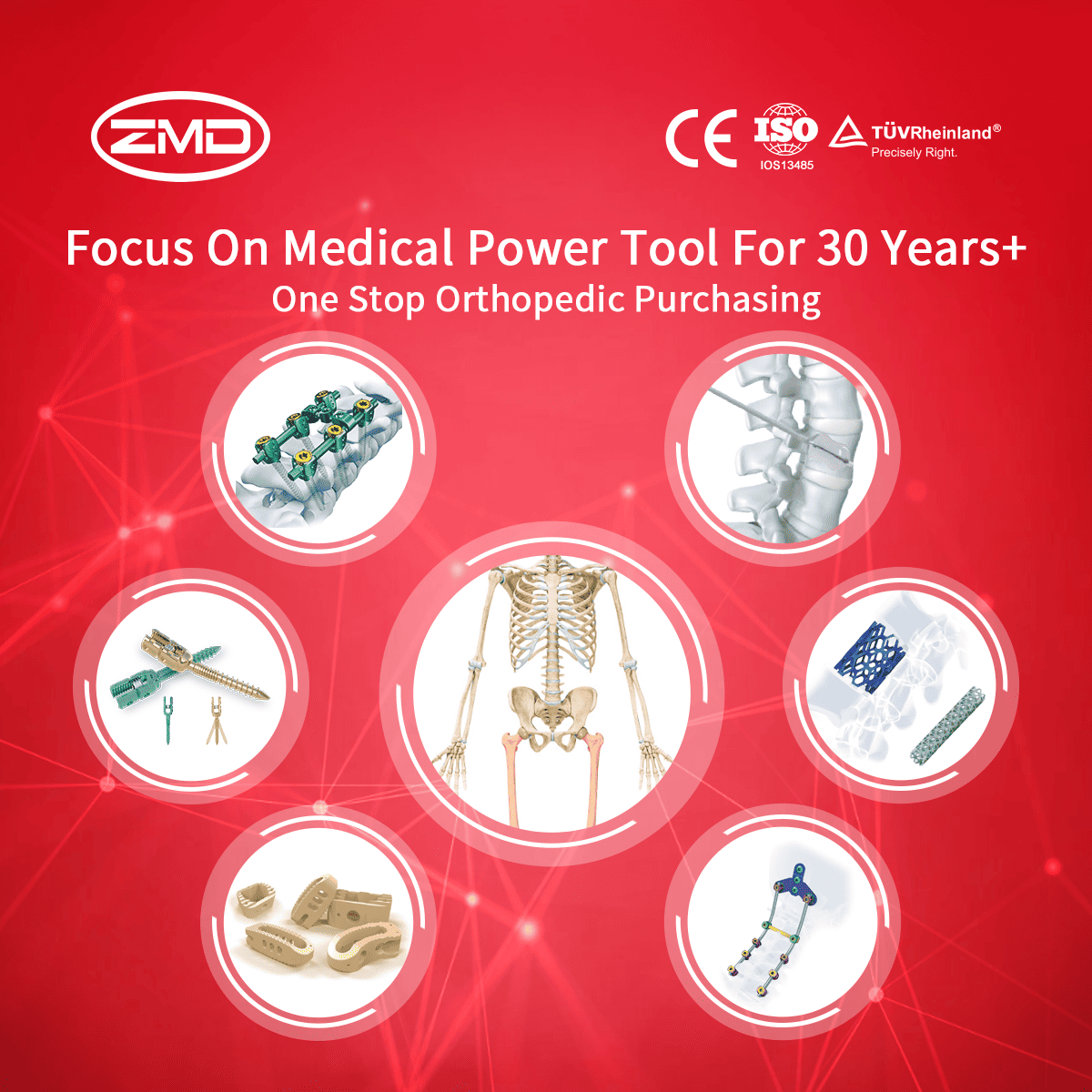Instruments
ZMD
Orthopedic Products
Haven't been able to locate the product you're searching for yet?
If you're interested in more orthopaedic implant products, feel free to get in touch with our ZMD consultants.
What are Surgical Instruments
These are used to cut through tissues and separate different anatomical structures. One of the most common examples is the scalpel. A scalpel typically consists of a sharp, replaceable blade attached to a handle. It allows for extremely precise incisions during surgeries such as a simple skin biopsy or more complex procedures like open-heart surgery. The sharpness of the blade enables the surgeon to make clean cuts with minimal tissue damage, which is crucial for proper wound healing and reducing the risk of complications
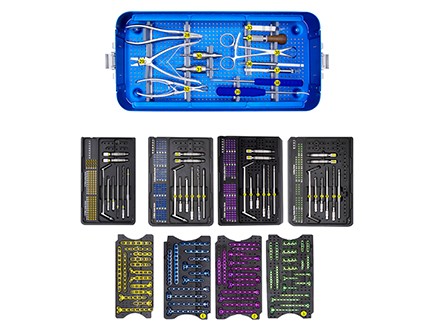
Instrument Sets
- General Surgery Sets: These are designed to cover a broad range of procedures that fall under general surgery. For instance, in an appendectomy, a general surgery instrument set might include items like surgical scissors for cutting tissues and ligaments around the appendix, forceps for grasping and manipulating the appendix during its removal, retractors to hold back the abdominal wall and adjacent organs to provide a clear surgical field, and hemostatic clamps to control bleeding. All these instruments are carefully selected and packaged together to ensure that the surgeon has immediate access to everything needed for a smooth and efficient operation.
- Orthopedic Surgery Sets: Orthopedic procedures involve working with bones, joints, and soft tissues related to the musculoskeletal system. In a knee replacement surgery, an orthopedic instrument set would consist of specialized tools. There would be bone saws for precisely cutting the damaged bone surfaces to prepare for the implant, bone chisels for shaping the bone as required, drills for creating holes to insert screws or pins for fixation, and specific retractors to hold soft tissues away from the surgical site while working on the bones. These sets are essential for orthopedic surgeons to perform complex procedures accurately and safely.
- Neurosurgery Sets: Neurosurgery demands the highest level of precision due to the delicate nature of the brain and spinal cord. A neurosurgery instrument set for a brain tumor resection, for example, would contain micro-instruments. There would be fine-tipped forceps for delicately grasping and removing small pieces of the tumor without damaging surrounding nerve tissues, micro-scalpels for making precise incisions in the brain tissue, and specialized retractors that can gently hold back brain tissue to expose the tumor while minimizing trauma. Such sets are carefully curated to assist neurosurgeons in navigating the intricate and sensitive anatomical structures during surgeries.
Instrument Tools
- Scalpels: These are fundamental cutting tools in surgery. The blade’s sharpness allows for clean incisions. In a simple skin laceration repair, a small, straight scalpel might be used to carefully debride the edges of the wound before suturing. In more complex surgeries like a mastectomy, a larger scalpel can be employed to make the initial incisions through the skin and underlying tissues. Different blade sizes and shapes are available to suit various surgical needs, whether it’s a delicate procedure on a small area or a major operation requiring larger cuts.
- Clamps: Hemostatic clamps, for example, are crucial for controlling bleeding during surgeries. In a vascular surgery where blood vessels are being repaired or anastomosed, vascular clamps are used to temporarily stop the blood flow, allowing the surgeon to work on the vessel without excessive blood loss. Non – hemostatic clamps like towel clamps are used to hold surgical drapes or other materials in place during the procedure, ensuring a sterile and organized surgical environment.
- Retractors: As mentioned earlier, they serve to hold back tissues or organs to provide better access to the surgical area. In a thoracic surgery, rib retractors can be used to spread the ribs apart gently, giving the surgeon a clear view of the lungs and other thoracic structures. In a plastic surgery procedure like a facelift, small, delicate retractors are used to hold the skin and soft tissues aside while the surgeon performs the necessary manipulations to improve facial aesthetics.
- Suturing Needles: These are designed to hold sutures and pass them through tissues for wound closure. In a bowel anastomosis during gastrointestinal surgery, a curved suturing needle with a specific shape and size is chosen based on the thickness of the bowel wall. It enables the surgeon to make precise stitches to connect the two ends of the bowel, ensuring a secure and leak-proof connection. Different needle types are available for various tissue types, from the delicate tissues of the eye in ophthalmic surgery to the thicker tissues in orthopedic procedures.
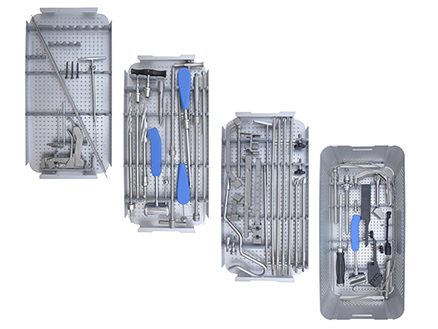
When Are Surgical Instruments Needed?
Surgical instruments play a vital role in the field of medicine, enabling surgeons to carry out a diverse array of procedures with the highest level of accuracy and safety. Here are some of the surgical specialties where these instruments are indispensable:
General Surgery
- Abdominal Surgeries: Instruments such as retractors like the Balfour retractor are used to hold back the abdominal wall and provide a clear view of the internal organs. Scalpels are used to make precise incisions, and forceps and clamps are essential for handling and manipulating tissues such as the intestines. For example, in an appendectomy, a combination of these instruments helps the surgeon locate, isolate, and remove the appendix.
- Herniorrhaphy: Surgical needles and sutures are crucial for closing the defect in the abdominal wall. Dissecting instruments are used to separate the layers of tissue and identify the hernia sac. Forceps are used to handle the sac and other tissues during the repair process to ensure that the hernia is properly corrected and the abdominal wall is strengthened.
Orthopedic Surgery
- Joint Replacements: Specialized bone saws and drills are used to prepare the bone surfaces for the implantation of artificial joints. For example, in a total knee replacement, the surgeon uses a precision bone saw to cut the distal femur and proximal tibia to fit the prosthetic components precisely. Orthopedic forceps and clamps are used to hold the bone fragments and soft tissues during the procedure to ensure stability and accurate alignment.
- Fracture Fixation: Instruments like bone plates, screws, and external fixators are used to hold fractured bones in place. Surgical drills are used to create holes in the bone for screw insertion. Clamps and forceps help in manipulating the bone fragments and aligning them properly before fixation. In a case of a complex long – bone fracture, these instruments work together to restore the bone’s integrity and allow for proper healing.
Neurosurgery
- Brain Surgeries: Micro – surgical instruments are of utmost importance. Micro – scalpels are used to make the most delicate incisions in the brain tissue. Fine – tipped forceps are used to handle and remove tumors or blood clots without causing damage to the surrounding neural tissue. Retractors designed specifically for neurosurgery gently hold back the brain tissue to provide access to the surgical site. For example, in a glioma resection, these micro – instruments help the surgeon navigate through the complex network of neurons and blood vessels to remove the tumor while minimizing the risk of neurological damage.
- Spinal Surgeries: Specialized spinal retractors are used to expose the spinal column. Bone rongeurs are used to remove bone spurs or damaged vertebrae. Screws and rods are inserted using precision – drilled holes to stabilize the spine. In a spinal fusion procedure, these instruments ensure that the vertebrae are properly aligned and fused together to relieve pressure on the spinal cord or nerves and correct deformities.
Ophthalmic Surgery
- Cataract Surgery: Ultra – fine instruments such as micro – forceps and micro – scissors are used to handle the delicate structures of the eye. A phacoemulsification probe, a specialized instrument, is used to break up the cataract – affected lens into small pieces that can be removed. Sutures or intraocular lenses are then inserted using precise instruments to restore vision.
- Retinal Surgery: Delicate retinal forceps and scissors are used to repair tears or detachments in the retina. Instruments are designed to work within the confined space of the eye and handle the extremely thin and sensitive retinal tissue. Specialized illumination and visualization instruments are also used to provide a clear view of the surgical area during these complex procedures.
Plastic Surgery
- Cosmetic Surgeries: In a rhinoplasty (nose job), precision – sculpting instruments such as rasps and chisels are used to reshape the nasal bones and cartilage. Fine – tipped forceps and scissors are used to handle the soft tissues of the nose and make incisions for the insertion of implants or for tissue repositioning. In a facelift, skin hooks and retractors are used to lift and hold the skin while the surgeon tightens the underlying muscles and removes excess skin.
- Reconstructive Surgeries: When reconstructing a defect, for example, after a trauma or tumor resection, instruments are used to harvest and transfer tissue grafts. Skin graft knives are used to harvest skin from a donor site, and instruments for microsurgery are used to anastomose blood vessels if a free flap is involved to ensure the graft’s survival and proper healing.
Blog
International Women’s Day: Salute to the “She – Power” at ZMD
International Women’s Day: Salute to the “She – Power” at ZMD Amid the trends of “Intelligent Medical Devices” and “Minimally Invasive Medical Technologies”, ZMD thrives
Discover Innovation with Sunan Medical at AAOS
Discover Innovation with Sunan Medical at AAOS The American Academy of Orthopaedic Surgeons (AAOS) Annual Meeting is the premier event for orthopedic professionals worldwide, offering
Visit Us at Expomed Eurasia 2025: Discover Sunan Medical’s Innovations
Visit Us at Expomed Eurasia 2025: Discover Sunan Medical’s Innovations The 32nd Expomed Eurasia, taking place from April 24-26, 2025, at the Tüyap Exhibition and

